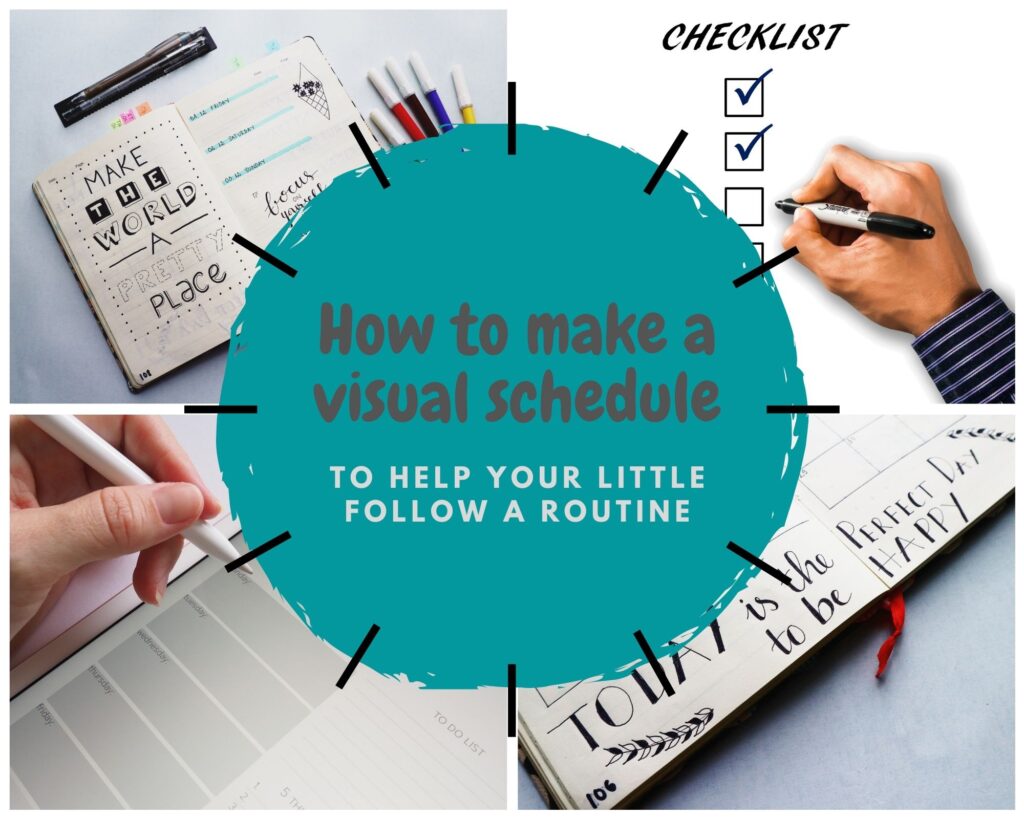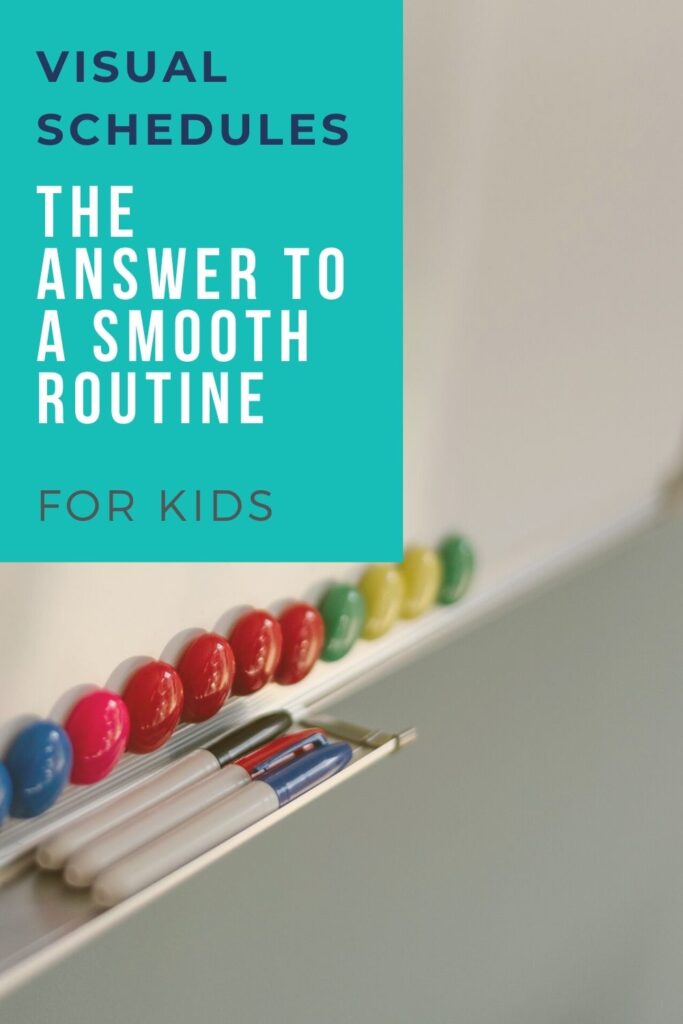Kids love predictability. Adults do too. We all thrive on knowing what is coming up next. We find security in knowing what to expect.
Moms and dads probably have some sort of visual to help them keep track of their schedules. Wall calendar, digital calendar, old fashioned planner. Have you ever considered using some type of visual for your kiddos?
When you establish a routine you help your youngster have a smooth day. When you follow one day in and day out they know what to do and where to be. It creates a rhythm for their day.
Using a visual schedule along with your routine helps the day go smoother for your child. It greatly reinforces the order of activities and helps children see what’s going on. Today’s post will go over how to successfully follow routines with a visual schedule.

What Is A Visual Schedule
Essentially a visual schedule is a list of activities that are posted in an easy to see spot. Visuals can be written out with just words or include pictures. The words on the schedule structure the day or activity, pictures illustrate predictability. Pictures also serve as a quick reference for children to see what the activity will look like, especially if they aren’t reading yet.
Visual schedules can be made to include the entire day’s events, or it can be used for smaller routines like bedtime.
Either way, visual schedules create a flow and purpose. It helps littles transition from one thing to the next. It also helps you stay organized and on track with your kids too!
How To Make A Visual Schedule
The basic structure of a visual schedule lists the activities in the order that they will happen. The words go on the left and the corresponding pictures are placed directly across from the event on the right.
For younger kids list the schedule in numerical order. For older kids, you can use the time to show the order of things.
If you are using pictures Clipart or something similar has a great library of pictures to choose from.
Different variations can be made depending on the purpose of a visual schedule. For routines that occur daily, you can make a more permanent visual schedule by typing it up, copying and pasting pictures on the document, print it off, and post in a designated spot.
For infrequent or spontaneous activities you can either handwrite and draw little pictures. Or you can keep an envelope of printed clipart pictures and tape those to a schedule as needed. The pictures can be reused.
Different Types of Visual Schedules
There’s flexibility in creating a visual schedule and luckily they don’t come in a one size fits all format. You might have routines that occur daily. You might have an order of events that happens once a week. You can make a schedule for either type of situation.
Overall visual schedules are a great tool to reinforce the activities of the day or to break tasks down into smaller steps.
Daily Visual Schedule
Here is an example of a daily visual schedule. You can simply list the daily events in the order they occur. If schedules differ from day to day you can also create one for each day of the week.
Using a visual schedule is especially helpful if you’re following a baby sleep training schedule as described in this post.
- Wake-up (picture of sun)
- Eat breakfast (picture of bowl of cereal)
- Get dressed (picture of shirt)
- Play (picture of toy)
- Outside time (picture of tree or flower)
- Eat lunch (picture of sandwich)
- Nap (picture of bed)
- Play (picture of toy)
- Dinner (picture of plate of food)
- Bedtime (picture of bed)
Smaller Routine Visual Schedule
For smaller routines, like getting ready for the day or bedtime visual schedules can also be used to break tasks down into smaller steps or teach a new skill.
Here is an example of a morning routine:
- Wake-up (picture of sun)
- Eat breakfast (picture of bowl of cereal)
- Get dressed (picture of shirt)
- Brush teeth (picture of toothbrush)
- Comb hair (picture of comb)
- Play (picture of toy)

Tips For Using A Visual Schedule
To make sure your child is successfully following routines with a visual schedule hang up schedules in areas that your child will see them.
Here are some tips to help you and your child use a visual schedule.
- Hang up the daily schedule in an easily accessible area for your child. The refrigerator, bulletin board, front door are some examples. Make sure it is at your kid’s eye level.
- Put schedules for specific tasks in the area that the task occurs in. Tape up bathroom related activities on the bathroom mirror. Attach getting ready to leave the house routine by the door and so on.
- Teach your kiddo how to use their visual schedule: Look at the visual schedule at the beginning of the day or before starting a routine. When you’re child is asking what’s next show them to look at the visual schedule. When you’re switching activities point to the next event to help foreshadow and transition.
- Make schedules portable. Clipboards or notebooks are a great way to bring a visual schedule along as you move throughout your day. If you’re on the go you can use a smaller piece of paper that can easily slip into a pocket or purse.
- Visual schedules can be interchangeable. Tack a piece of velcro on a small dry erase board along with frequently used cut out pictures. If a routine needs to be changed you can swap out words and pictures as needed.
Keep your day running smoothly for you and your child with the help of visual schedules! It will help you both be on track as you go about your day.